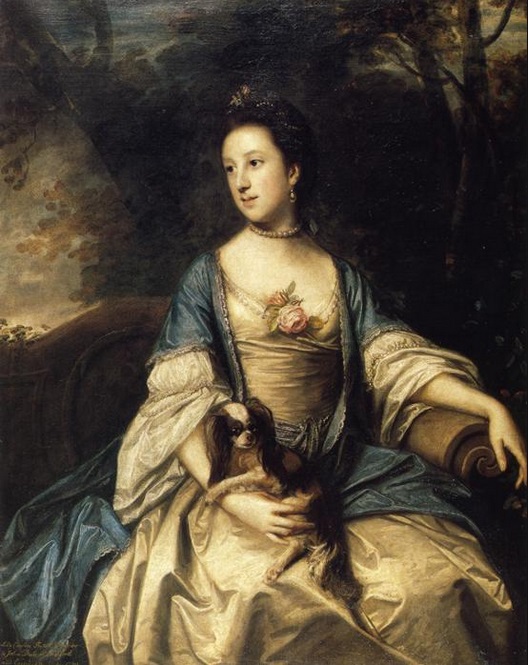
4th Earl of Abingdon: 12 Country Dances and 3 Capricios with 3 Minuets (1787) - Miss Skinner's Minuet and Dutchess of Marlborough's Minuet
Twelve Country Dances and Three Capricios [sic] for Two Flutes and a Bass, with Three Minuets for Two Flutes, Two Violins, Horns, and Bass. Composed by the Right Honourable the Earl of Abingdon and Printed by his Lordship's Permission, by his Lordship's Most Obedt & devoted Hble Servt T: Monzani (London: T. Monzani, [1787])
-
Minuet I. Miss Skinners
-
Minuet II. Dutchess of Marlboroughs
Image courtesy of the British Library Board, Music Collections g.443.d.(2.), p. 11
To download mp3 files either click on the three dots or right-click on the player and choose the save/download option.
Recording Details:
Rikki Wolpowitz and Beth Stone - flutes
Peter Moutoussis and Alexander Boukikov - horns
Robert Percival - bassoon
Wiebke Thormählen and Taisia Sandetcaia - violins
Recorded at the Royal College of Music, London, 20 May 2021
SCORE: Abingdon Miss Skinner & Dutchess of Marlborough Minuets
PARTS: Abingdon Miss Skinner & Dutchess of Marlborough Minuets
Published in London in 1787 by the newly established publisher Theobald Monzani, this collection presents twelve country dances with playful titles such as The way to keep him and Fops Alley in three-part score for two treble instruments and a bass part. Monzani had arrived in England around 1785 and established himself as a concert flautist, launching his publishing business in 1787 with a strong focus on flute music. This collection formed the beginnings of a long publishing relationship between the Earl of Abingdon and Monzani (McCulloch 2000), and it is particularly interesting today because of its fully scored presentation of three minuets appended to the simpler country dance scores.
Willoughby Bertie, 4th Earl of Abingdon (1740-1799) had considerable musical interests and was influential in shaping London’s concert scene for a short time. After the death of Johann Christian Bach in 1782, he took over the management of the Bach-Abel concert series at the Hanover Square Rooms for the next two years, where he was at least in part responsible for choosing performers and repertoire. This was a family affair as the proprietor of the rooms was Abingdon’s brother-in-law, Giovanni Gallini, a professional dancer and pedagogue turned impresario who additionally managed the King’s Theatre (McCulloch 2000; McVeigh 1989).
Abingdon was also a flautist and composer. His oeuvre consisted of choral works, songs and instrumental pieces which heavily featured dance. He produced two collections of country dances and minuets in the late 1780s, including this set, although isolated dances attributed to him also appear in publications by Thomas Skillern and Neil Stewart. Many of his dances are named after family members and acquaintances. Susanna Maria Skinner was Abingdon’s niece by marriage; her grandfather, Admiral Sir Peter Warren, owned considerable property in America and Ireland and his modern physical presence is felt through names such as Warren Street in London. Caroline Spencer, 4th Duchess of Marlborough, was amongst the audience members at the Hanover Square concerts. Both Abingdon and the Marlboroughs had country seats in Oxfordshire and Abingdon composed minuets for the Marlborough daughters, Ladies Elizabeth and Caroline Spencer.
Both of Abingdon’s minuets are scored for two flutes, two horns, two violins and a bass. This mirrors the Six Minuetts for Two Violins, Oboes and Horns, produced “by Permission of the Earl of Abingdon” but attributed to Abingdon’s teacher, Karl Weiss. The orchestra for the Bach-Abel concerts during Abingdon’s tenure consisted of pairs of flutes (with Weiss as principal flautist), oboes, bassoons and horns, along with a complement of strings, with the addition of two clarinets in 1783.
Further Reading:
McCulloch, Derek. 2000. “The Musical “Oeuvre” of Willoughby Bertie, 4th Earl of Abingdon (1740-99).” Royal Musical Association Research Chronicle 33: 1-27.
McVeigh, Simon. 1989. “The Professional Concert and Rival Subscription Series in London, 1783-1793.” Royal Musical Association Research Chronicle 22: 1-135.

Sir Joshua Reynolds, Caroline, Duchess of Marlborough, c. 1759-1762, Trustees of the Goodwood Collection, Goodwood House, Sussex, Wikimedia Commons.
